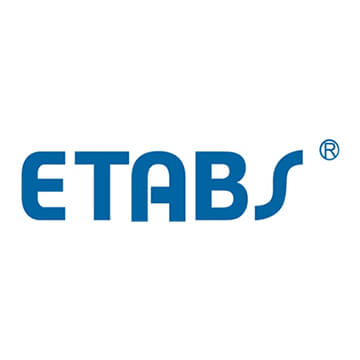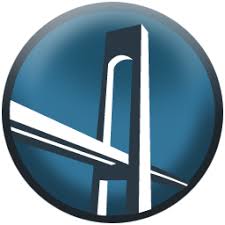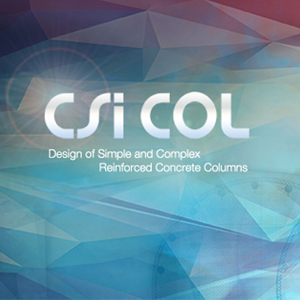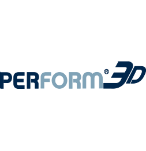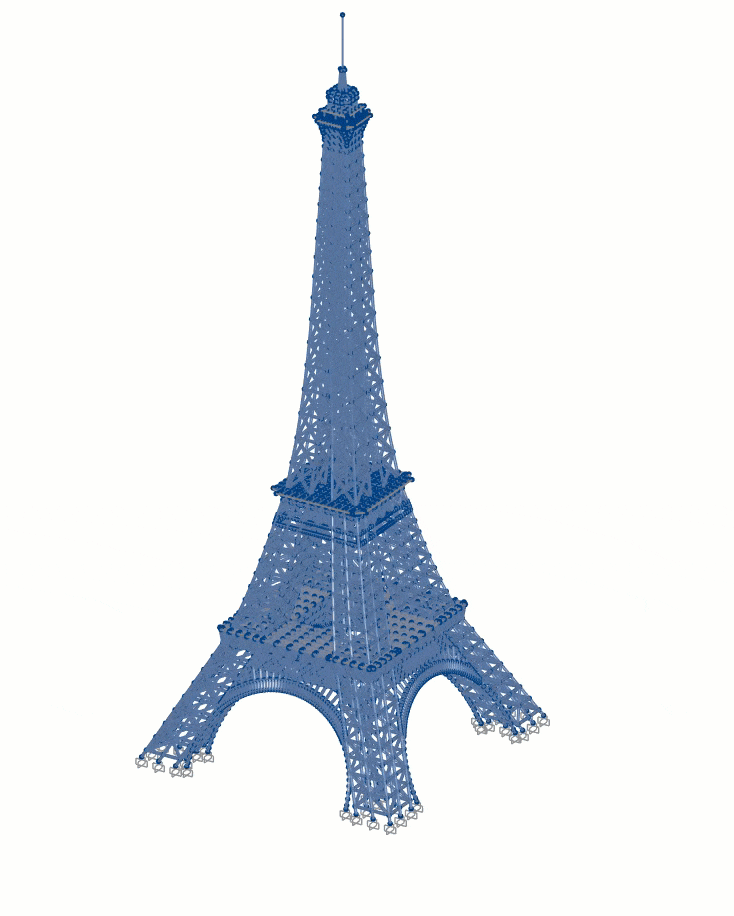
Founded in 1975, Computers and Structures, Inc. (CSI) is recognized globally as the pioneering leader in software tools for structural and earthquake engineering. Software from CSI is used by thousands of engineering firms in over 160 countries for the design of major projects, including the Taipei 101 Tower in Taiwan, One World Trade Center in New York, the 2008 Olympics Birds Nest Stadium in Beijing and the cable-stayed Centenario Bridge over the Panama Canal. CSI’s software is backed by more than four decades of research and development, making it the trusted choice of sophisticated design professionals everywhere.
CSI produces five primary software packages: SAP2000, CSiBridge, ETABS, SAFE, and PERFORM-3D.
Each of these programs offers unique capabilities and tools that are tailored to different types of structures and problems, allowing users to find just the right solution for their work. SAP2000 is intended for use on civil structures such as dams, communication towers, stadiums, industrial plants and buildings. CSiBridge offers powerful parametric design of concrete and steel bridges. ETABS has been developed specifically for multi-story commercial and residential building structures, such as office towers, apartments and hospitals. The SAFE System provides an efficient and powerful program for the analysis and design of concrete slabs and foundations, with or without post-tensioning. PERFORM-3D is a highly focused nonlinear tool offering powerful performance based design capabilities.
With its uniquely qualified staff of professional structural engineers, researchers, academicians, and its worldwide involvement in the structural engineering community, CSI has been at the forefront of structural software development for nearly four decades. With CSI products you can be confident that you have the finest structural engineering software available, backed by a company with an unmatched record of innovation, and an unrivaled commitment to meet the ever-evolving needs of the profession.
SAP2000
SAP2000 follows in the same tradition featuring a very sophisticated, intuitive and versatile user interface powered by an unmatched analysis engine and design tools for engineers working on transportation, industrial, public works, sports, and other facilities.
The SAP name has been synonymous with state-of-the-art analytical methods since its introduction over 35 years ago. SAP2000 follows in the same tradition featuring a very sophisticated, intuitive and versatile user interface powered by an unmatched analysis engine and design tools for engineers working on transportation, industrial, public works, sports, and other facilities.
From its 3D object based graphical modeling environment to the wide variety of analysis and design options completely integrated across one powerful user interface, SAP2000 has proven to be the most integrated, productive and practical general purpose structural program on the market today. This intuitive interface allows you to create structural models rapidly and intuitively without long learning curve delays. Now you can harness the power of SAP2000 for all of your analysis and design tasks, including small day-to-day problems. Complex Models can be generated and meshed with powerful built in templates. Integrated design code features can automatically generate wind, wave, bridge, and seismic loads with comprehensive automatic steel and concrete design code checks per US, Canadian and international design standards.
Advanced analytical techniques allow for step-by-step large deformation analysis, Eigen and Ritz analyses based on stiffness of nonlinear cases, catenary cable analysis, material nonlinear analysis with fiber hinges, multi-layered nonlinear shell element, buckling analysis, progressive collapse analysis, energy methods for drift control, velocity-dependent dampers, base isolators, support plasticity and nonlinear segmental construction analysis. Nonlinear analyses can be static and/or time history, with options for FNA nonlinear time history dynamic analysis and direct integration.
From a simple small 2D static frame analysis to a large complex 3D nonlinear dynamic analysis, SAP2000 is the easiest, most productive solution for your structural analysis and design needs.
etabs
For nearly 30 years, ETABS has been recognized as the industry standard for Building Analysis and Design Software. Today, continuing in the same tradition, ETABS has evolved into a completely integrated building analysis and design environment. The system built around a physical object based graphical user interface, powered by targeted new special purpose algorithms for analysis and design, with interfaces for drafting and manufacturing, is redefining standards of integration, productivity and technical innovation.
The integrated model can include moment resisting frames, braced frames, staggered truss systems, frames with reduced beam sections or side plates, rigid and flexible floors, sloped roofs, ramps and parking structures, mezzanine floors, multiple tower buildings and stepped diaphragm systems with complex concrete, composite or steel joist floor framing systems. solutions to complex problems such as panel zone deformations, diaphragm shear stresses, and construction sequence loading are now at your fingertips.
ETABS is the solution, whether you are designing a simple 2D frame or performing a dynamic analysis of a complex high-rise that utilizes non-linear dampers for inter-story drift control.
safe
SAFE is the ultimate tool for designing concrete floor and foundation systems. From framing layout all the way through to detail drawing production, SAFE integrates every aspect of the engineering design process in one easy and intuitive environment. SAFE provides unmatched benefits to the engineer with its truly unique combination of power, comprehensive capabilities, and ease-of-use.
Laying out models is quick and efficient with the sophisticated drawing tools, or use one of the import options to bring in data from CAD, spreadsheet, or database programs. Slabs or foundations can be of any shape, and can include edges shaped with circular and spline curves.
Post-tensioning may be included in both slabs and beams to balance a percentage of the self-weight. Suspended slabs can include flat, two-way, waffle, and ribbed framing systems. Models can have columns, braces, walls, and ramps connected from the floors above and below. Walls can be modeled as either straight or curved.
Mats and foundations can include nonlinear uplift from the soil springs, and a nonlinear cracked analysis is available for slabs. Generating pattern surface loads is easily done by SAFE with an automated option. Design strips can be generated by SAFE or drawn in a completely arbitrary manner by the user, with complete control provided for locating and sizing the calculated reinforcement. Finite element design without strips is also available and useful for slabs with complex geometries.
Comprehensive and customizable reports are available for all analysis and design results. Detailed plans, sections, elevations, schedules, and tables may be generated, viewed, and printed from within SAFE or exported to CAD packages.
SAFE provides an immensely capable yet easy-to-use program for structural designers, provideing the only tool necessary for the modeling, analysis, design, and detailing of concrete slab systems and foundations.
csi bridge
Modeling, analysis and design of bridge structures have been integrated into CSiBridge to create the ultimate in computerized engineering tools. The ease with which all of these tasks can be accomplished makes CSiBridge the most versatile and productive software program available on the market today.
Using CSiBridge, engineers can easily define complex bridge geometries, boundary conditions and load cases. The bridge models are defined parametrically, using terms that are familiar to bridge engineers such as layout lines, spans, bearings, abutments, bents, hinges and post-tensioning. The software creates spine, shell or solid object models that update automatically as the bridge definition parameters are changed.
CSiBridge design allows for quick and easy design and retrofitting of steel and concrete bridges. The parametric modeler allows the user to build simple or complex bridge models and to make changes efficiently while maintaining total control over the design process. Lanes and vehicles can be defined quickly and include width effects. Simple and practical Gantt charts are available to simulate modeling of construction sequences and scheduling.
CSiBridge includes an easy to follow wizard that outlines the steps necessary to create a bridge model.
Completely integrated within the CSiBridge design package is the power of the SAPFire® analysis engine, including staged construction, creep and shrinkage analysis, cable tensioning to target forces, camber and shape finding, geometric nonlinearity (P-delta and large displacements), material nonlinearity (superstructure, bearings, substructure and soil supports), buckling and static and dynamic analysis. All of these apply to a single comprehensive model. In addition, AASHTO LRFD design is included with automated load combinations, superstructure design and the latest seismic design.
csi col
CSiCOL is a comprehensive software package used for the analysis and design of columns. The design of columns of any concrete, reinforced concrete, or composite cross-section can be carried out by the program. CSiCOL provides a ‘Quick Design Wizard’ tool that guides the users step-by-step, through the whole process of column design. This makes the design process simple, organized and efficient. The design can be carried out in accordance with ACI-318-11, ACI-318-08, ACI 318-05, ACI 318-02, ACI 318-99, BS8110, CSA A-23.3-04, CSA A23.3-94, Eurocode 2-2004 and IS 456-2000 codes.
CSiCOL is capable of handling an unlimited number of load combinations both for sway and non-sway conditions. The design actions may be specified directly or may be computed by the program using the moment magnification method. The design and analysis take into account the slenderness effects. Sway or non-sway condition checks may also be performed by the program as specified by the selected design code. Moreover, CSiCOL is capable of determining the Effective Length Factor based on the framing and end conditions of the column. CSiCOL output includes the capacity interaction surface, load-moment curves, moment-moment curves, moment-curvature curves for various failure criteria, combined axial-flexural elastic stress contours, rebar stresses, cracked section stresses, load point location, capacity vector, neutral axis depth and orientation, etc. Reports may be created as part of the output for the analysis and design process. The reports may be customized by adding information and graphics of your choice.
CSiCOL provides several predefined parametric shapes, including a variety of solids, hollow, and flanged shapes, in addition to a large collection of Standard Steel Database Shapes, which can be used in composite columns. It is easy to merge, edit and draw Shapes to suit geometry requirements and create complex cross-sections. The program provides tools for the alignment, stacking, and placement of these Shapes. Rebars can be placed anywhere (corner, perimeter, sides, circle, irregular, etc.) in the cross-section using several addition and placement tools. Standard (ASTM, Metric, and Imperial) as well as user defined rebar sets may be used.
perfomr-3d
Traditionally, earthquake-resistant design has been strength-based, using linear elastic analysis. Since inelastic behavior is usually allowed for strong earthquakes, this is not entirely rational. Strength-based design considers inelastic behavior only implicitly. Displacement-based (or deformation-based) design considers inelastic behavior explicitly, using nonlinear inelastic analysis. Displacement-based design recognizes that in a strong earthquake, inelastic deformation (or ductility) can be more important than strength. PERFORM-3D allows you to use displacement-based design.
Procedures for displacement-based design using inelastic analysis are specified in ASCE 41, “Seismic Rehabilitation of Existing Buildings”. ASCE 41 applies to the retrofit of existing buildings, but the procedures can be applied to the design of new buildings. PERFORM-3D implements the procedures in ASCE 41. However, PERFORM-3D is a general tool for implementing displacement-based design. It is not limited to ASCE 41.
The response of a structure to earthquake ground motion, whether elastic or inelastic, is highly uncertain. Capacity design is a rational way to improve the response of a structure in a strong earthquake, by deliberately controlling its behavior. Capacity design controls the inelastic behavior of a structure, by allowing inelastic behavior only in locations chosen by the designer. In these locations the structural components are designed to be ductile. The rest of the structure remains essentially elastic, and can be less ductile. Controlling the behavior in this way improves reliability, reduces the amount of damage, and can reduce construction costs. PERFORM-3D allows you to apply capacity design principles.
PERFORM-3D has powerful capabilities for inelastic analysis, but it is not intended for general purpose nonlinear analysis. If you have no idea how your structure will behave when it becomes inelastic in a strong earthquake, PERFORM-3D can probably help you to identify the weak points, and hence can guide you in improving the design. However, PERFORM-3D is not intended for “design by analysis”, where the engineer expects the analysis to determine exactly how a structure will behave. PERFORM-3D is a powerful tool for implementing displacement-based design and capacity design. It will help you to produce better designs, but it will not do the engineering for you.
Displacement Based Design
- Traditionally, earthquake-resistant design has been strength-based, using linear elastic analysis.
- Since inelastic behavior is usually allowed for strong earthquakes, this is not entirely rational.
Strength-based design considers inelastic behavior only implicitly. - Displacement-based (or deformation-based) design considers inelastic behavior explicitly, using nonlinear inelastic analysis.
- Displacement-based design recognizes that in a strong earthquake, inelastic deformation (or ductility) can be more important than strength.
- PERFORM-3D allows you to use displacement-based design.
Implementation of ASCE 41
- Procedures for displacement-based design using inelastic analysis are specified in ASCE 41, “Seismic Rehabilitation of Existing Buildings”.
- ASCE 41 applies to the retrofit of existing buildings, but the procedures can be applied to the design of new buildings.
- PERFORM-3D implements the procedures in ASCE 41.
- However, PERFORM-3D is a general tool for implementing displacement-based design. It is not limited to ASCE 41.
Capacity Design
- The response of a structure to earthquake ground motion, whether elastic or inelastic, is highly uncertain.
- Capacity design is a rational way to improve the response of a structure in a strong earthquake, by deliberately controlling its behavior.
- Capacity design controls the inelastic behavior of a structure, by allowing inelastic behavior only in locations chosen by the designer. In these locations the structural components are designed to be ductile. The rest of the structure remains essentially elastic, and can be less ductile.
- Controlling the behavior in this way improves reliability, reduces the amount of damage, and can reduce construction costs.
- PERFORM-3D allows you to apply capacity design principles.
What PERFORM-3D is NOT
- PERFORM-3D has powerful capabilities for inelastic analysis, but it is not intended for general purpose nonlinear analysis.
- If you have no idea how your structure will behave when it becomes inelastic in a strong earthquake, PERFORM-3D can probably help you to identify the weak points, and hence can guide you in improving the design.
- However, PERFORM-3D is not intended for “design by analysis”, where the engineer expects the analysis to determine exactly how a structure will behave.
PERFORM-3D is a powerful tool for implementing displacement-based design and capacity design. It will help you to produce better designs, but it will not do the engineering for you.


